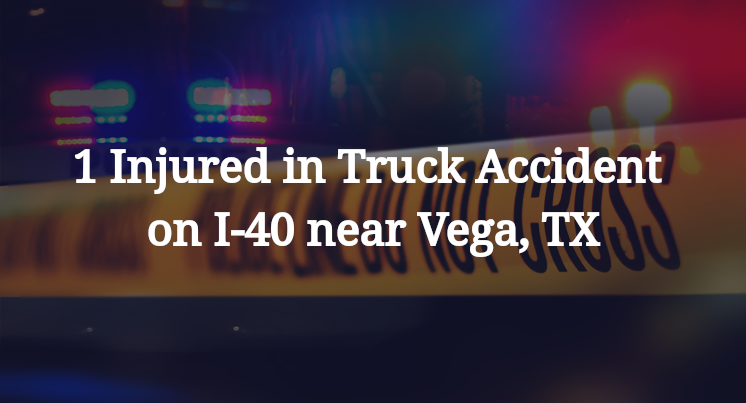1 Injured in Truck Accident on I-40 near Vega, TX
Oldham County, TX — March 14, 2025, one person was injured in a truck accident at about 10:20 a.m. on eastbound Interstate 40 near Vega.
A preliminary accident report indicates 2022 Freightliner semi-truck jackknifed after colliding with a 2020 Peterbilt semi-truck, as severe crosswinds limited visibility. A 2024 Toyota RAV4 and a 2023 Kenworth semi-truck also were damaged in the crash.

A 50-year-old Phoenix woman who was a passenger in the Toyota was seriously injured in the crash, according to the report. The 71-year-old man who was driving was listed as possibly injured.
No other injuries were reported.
Authorities have not released any additional information about the Oldham County crash.
Commentary by Attorney Michael Grossman
When multiple 18-wheelers and a passenger vehicle all end up damaged in a single incident, folks naturally want to know: How did this happen? Was it purely the weather, as early reports suggest? Or did someone involved make a critical mistake that put others at risk?
We’re told that strong crosswinds played a role in this crash, and they may well have made conditions hazardous. But wind alone doesn’t jackknife a semi-truck or cause a multi-vehicle pileup. For that to happen, there’s usually more at play; something involving a driver’s decisions, the truck’s condition or how the company behind the truck prepared it for the road.
The first thing that jumps out to me is that a 2022 Freightliner jackknifed after colliding with a 2020 Peterbilt. What’s not clear is who hit whom, and why. Was one of the trucks stopped or slowed due to poor visibility, and the other failed to adjust? Or did the lead truck brake suddenly or change lanes in a way the other couldn’t anticipate?
We also don’t know whether either of the drivers lost control because of a failure in judgment — say, driving too fast for conditions — or because their vehicle wasn't equipped or maintained properly for high-wind areas like the Texas Panhandle.
Then there’s the Toyota RAV4, which suffered serious injuries to one passenger. How that vehicle got caught up in a wreck between three commercial trucks is another major unknown. Was it behind the jackknifed truck? Did a trailer swing into its lane? Was it pushed into harm’s way after an initial impact? That kind of detail matters if we’re going to get a complete picture of what actually happened.
To figure out what really occurred here, you’d want to look beyond surface-level reports. That means obtaining:
- Black box data from each truck’s engine control module (ECM). That would show vehicle speeds, braking, throttle and steering inputs in the moments before the crash.
- Dash cam or in-cab video, if available, to piece together what the drivers saw and how they reacted.
- Cell phone records to determine if any driver was distracted.
- Hiring and training records from the trucking companies involved, especially if there’s reason to believe a driver wasn’t adequately prepared to handle crosswinds or poor visibility.
I handled a case a few years back where a truck driver rear-ended another big rig in a fog bank. The company argued it was a weather-related accident. But once we pulled the ECM data, it showed the truck had been traveling 65 mph right up to the point of impact. Turns out, weather wasn't the problem, bad decisions were.
It’s important to emphasize that bad weather doesn’t automatically excuse a crash. Commercial drivers are trained (or should be) to slow down, increase following distance or pull off the road entirely if conditions become unsafe. If a driver or company failed to take those precautions, then it may not matter how hard the wind was blowing; they could still be held accountable.
Key Takeaways
- Wind may have contributed to the crash, but it’s rarely the only cause when multiple large trucks are involved.
- Critical questions remain unanswered, including how the Toyota became entangled in the crash.
- Black box data, dash cams and hiring records will be key to determining whether any of the truck drivers or their companies acted negligently.
- Investigating whether drivers adjusted their driving for visibility and wind conditions is essential to assigning responsibility.
- Weather can be a factor, but it doesn't eliminate the duty to drive safely or excuse poor judgment.

“These are essential reads for anyone dealing with the aftermath of a truck wreck”– Attorney Cory Carlson